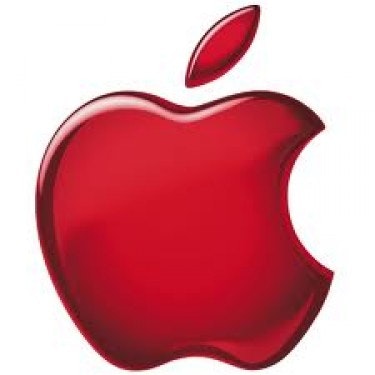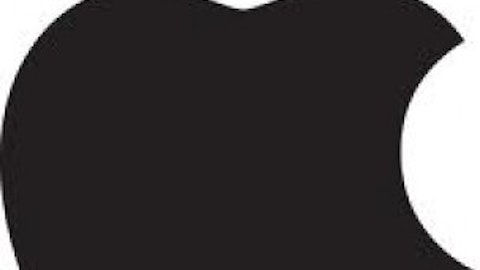It’s clear to anyone following the mobile industry that the ideal mobile handset size has steadily increased since the launch of Apple Inc. (NASDAQ:AAPL)’s iPhone in 2007. Prior to the iPhone’s arrival, leading handset makers such as Nokia Corporation (ADR) (NYSE:NOK), Motorola and Sony Corporation (ADR) (NYSE:SNE) prided themselves on making smaller, slimmer feature phones that could easily be carried in a pocket.
Today, smartphone manufacturers are creating larger and larger devices, thanks to full touch screen displays and more sophisticated apps that require larger screen sizes. Whereas the original iPhone had a 3.5-inch screen, the current generation iPhone 5 has a 4-inch one, while its primary rival, Samsung’s Galaxy S4, boasts a massive 5-inch display. In October 2011, Samsung blurred the lines between smartphones and tablets with its 5.3-inch Galaxy Note, which ushered in an era of “phablets,” despite doubts that the form factor could gain traction.
Considering the success of Samsung’s Galaxy Note series, many analysts are now wondering if Apple Inc. (NASDAQ:AAPL), which is dogged by concerns regarding its aging product line, is planning to release a phablet of its own. Let’s take a look at the evolution of smartphones, tablets and phablets to better understand if these comically large phones are merely a fad or the start of a permanent trend in mobile phones.
How did we get here?
When Steve Jobs released the original iPad in 2010, many industry watchers didn’t know what to make of it. Some believed that it was an unnecessary device for households that already had desktops, laptops and smartphones. Others believed that it was doomed to fail, just like the industry’s previous efforts to introduce tablet computers.
What many people failed to grasp was the concept of the “shared DNA” of the iPhone and the iPad. Jobs knew that based on the popularity of the iPhone, the iPad could succeed. He noticed that many iPhone users wanted the iOS experience on a larger screen. Therefore, instead of porting over a PC experience to the tablet, as Microsoft Corporation (NASDAQ:MSFT) had clumsily attempted in the past, it brought the smartphone experience to a larger screen.
What Samsung realized was that as more people used tablets, the more they found the two devices to be redundant. When users can download the same apps to the smartphone and tablet, the latter usually provides a more pleasant experience on its larger screen. However, users still needed to return to their smartphones to make a regular call or send traditional SMS messages. Out of that idea, the Galaxy Note was born.
By the end of 2012, Samsung had shipped over 10 million Galaxy Note units, sending its competitors scrambling to release their own phablets. Analysts at Barclays now estimate that the phablet market, currently defined as smartphones with screens larger than 5 inches, will grow 70% annually over the next three years, becoming a $135 billion market by the end of 2015. Total annual shipments are forecast to rise from 142 million units in 2013 to 402 million by 2015 – triple the number of iPhones sold in 2012.
Where do we go from here?
Today, there are two kinds of companies – those that completely embrace the phablet revolution, like Samsung, and those that shy away from it, like Apple Inc. (NASDAQ:AAPL).
China’s Huawei, one of the country’s largest Android handset manufacturers, has embraced Samsung’s philosophy to the extreme. The company recently introduced the MediaPad 7 Vogue, a 7-inch tablet that can also be used as a smartphone. The Android device features a 1025×600 IPS LCD touchscreen with a 1.2 GHz quad-core Cortex-A9 processor, in an aluminum unibody case. It has all the bells and whistles of a higher-end Android tablet. Although many people have mocked the MediaPad’s form factor as “absurd,” there could be a market for these “tablet phones,” since they can be used with Bluetooth headphones instead of being held up to the ear.
Nokia Corporation (ADR) (NYSE:NOK) has shown its preference for larger screens, as seen with its Lumia devices, but it has yet to create a phablet. However, recent rumors suggest that its upcoming Nokia EOS, most often noted for its 41-megapixel camera, will actually be a 5.3-inch phablet. Producing larger phablets would complement Nokia Corporation (ADR) (NYSE:NOK)’s current strategy of adding higher-end cameras to its smartphones, which the company considers to be its niche strength. Nokia is also rumored to be introducing a tablet by September, which could round out a more complete product line of Windows Phone 8 smartphones, phablets and tablets.
Asian rivals, such as Asus, HTC and ZTE, have been eager to catch up to Samsung, which accounted for three quarters of all phablet shipments last year, according to Barclays. This means that Apple Inc. (NASDAQ:AAPL) could be left in the dust, as it faces a new form factor that makes its iPhones look even more outdated.
However, I believe that market pressure will eventually force Apple Inc. (NASDAQ:AAPL) to release a phablet of its own. Apple eventually bowed to pressure from Amazon.com, Inc. (NASDAQ:AMZN)’s Kindle Fire and Google’s Nexus 7-inch tablets by creating the iPad Mini. Releasing a phablet, however, would be a tricky move which could cannibalize both iPad and iPhone sales, which respectively comprised 56% and 20% of its top line last quarter.
A “phabulous” fad or a new trend?
Although many investors still dismiss phablets as a fad, there are several positive catalysts that could make Barclays’ optimistic projections a reality.
First of all, consumers now use messaging services (WhatsApp, Viber, Line) more than traditional voice calls, which has changed the way consumers interact with their mobile devices. Mobile devices are now used more for web browsing, media consumption and games – which all require larger screens.
Second, customers in emerging markets such as India prefer purchasing a single device to fulfill the role of a tablet and a phone, and phablets fit the bill nicely. With a Bluetooth keyboard, they can even be used as ultra-portable PCs. Only using a single connected device at home and on the go can also reduce Internet costs by eliminating the need for a broadband connection at home. With the arrival of 4G networks and wireless tethering, phablets could eventually replace broadband modems altogether.
The Foolish Bottom Line
I believe that the current popularity of phablets is a long-term trend that will cause demand for smaller smartphones to plummet over the next few years. Many tech journalists have mocked phablets by showing how silly it looks to hold up an iPad Mini to the ear. However, they tend to ignore the fact that smartphones are now less phone and more computer than ever before, and users will favor a better experience with the latter over the former.
Therefore, I believe that it would be foolish for investors to dismiss phablets as another passing trend, or doomed to failure like netbooks, as some writers have claimed. Samsung’s numbers speak for themselves, and Apple Inc. (NASDAQ:AAPL) should pay close attention if it doesn’t want to get left behind again.
Leo Sun owns shares of Apple and Nokia Corporation (ADR) (NYSE:NOK). The Motley Fool recommends Apple. The Motley Fool owns shares of Apple Inc. (NASDAQ:AAPL).
The article The Rise of the Phablets! originally appeared on Fool.com.
Leo is a member of The Motley Fool Blog Network — entries represent the personal opinion of the blogger and are not formally edited.
Copyright © 1995 – 2013 The Motley Fool, LLC. All rights reserved. The Motley Fool has a disclosure policy.






